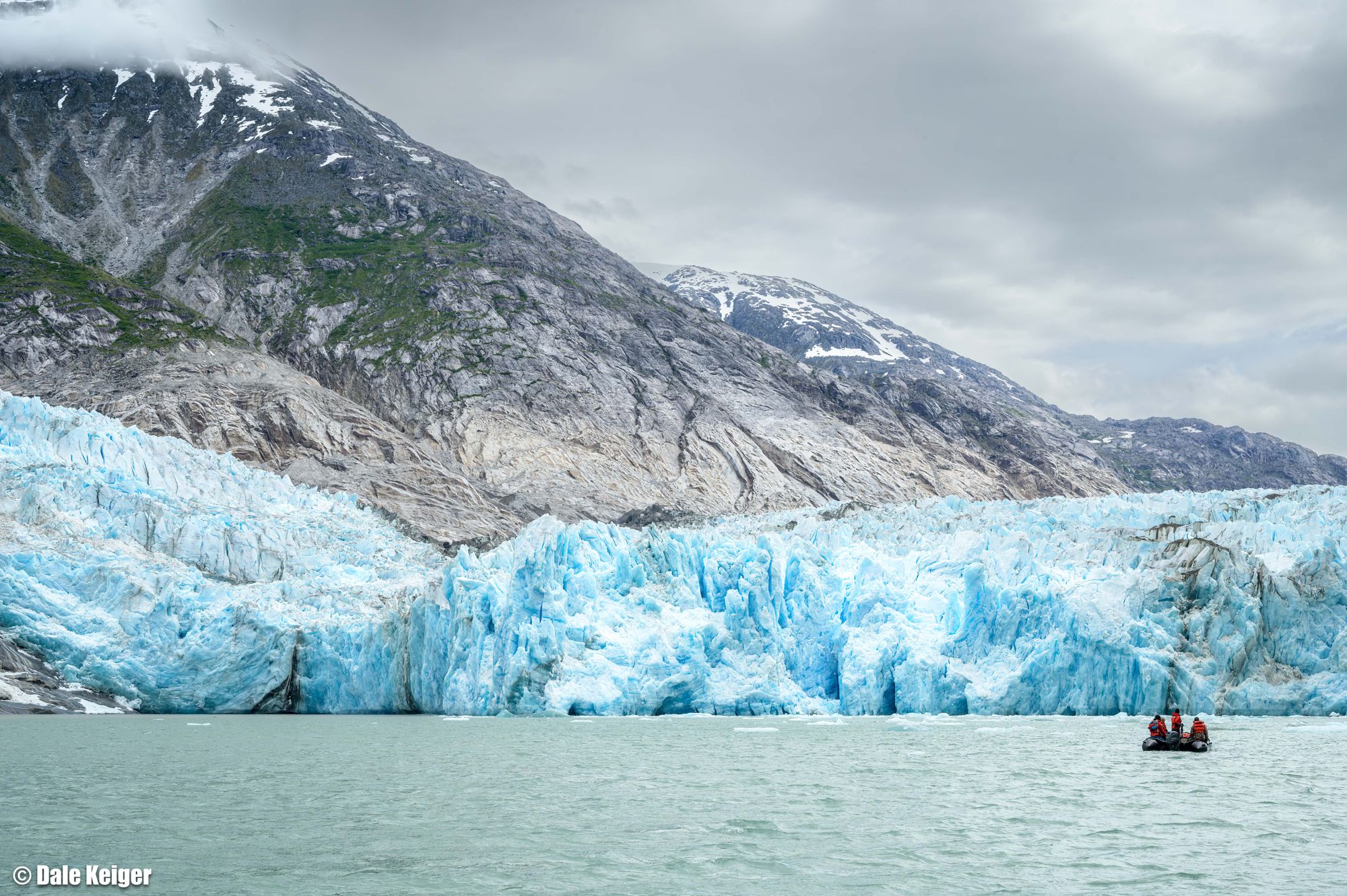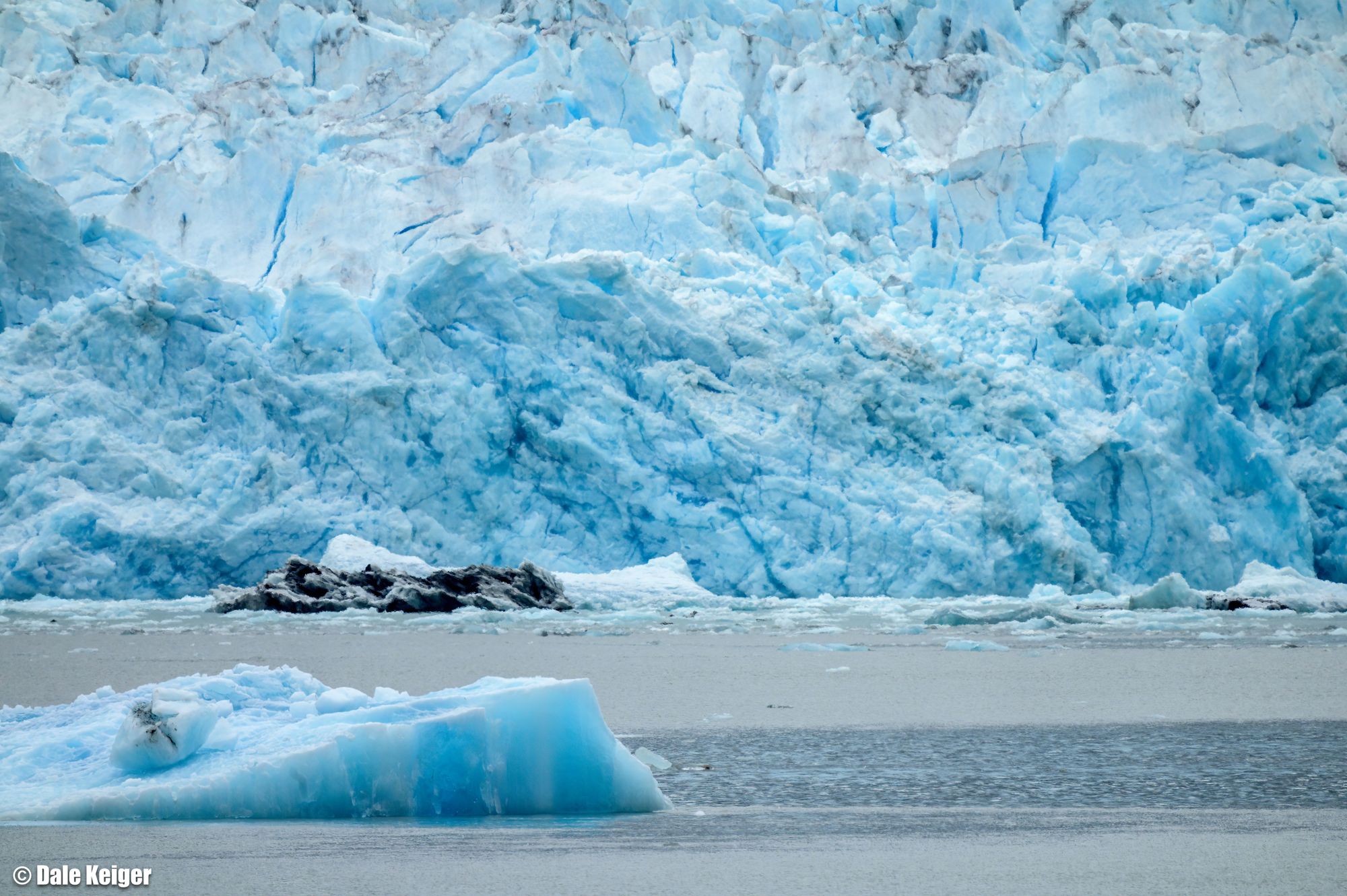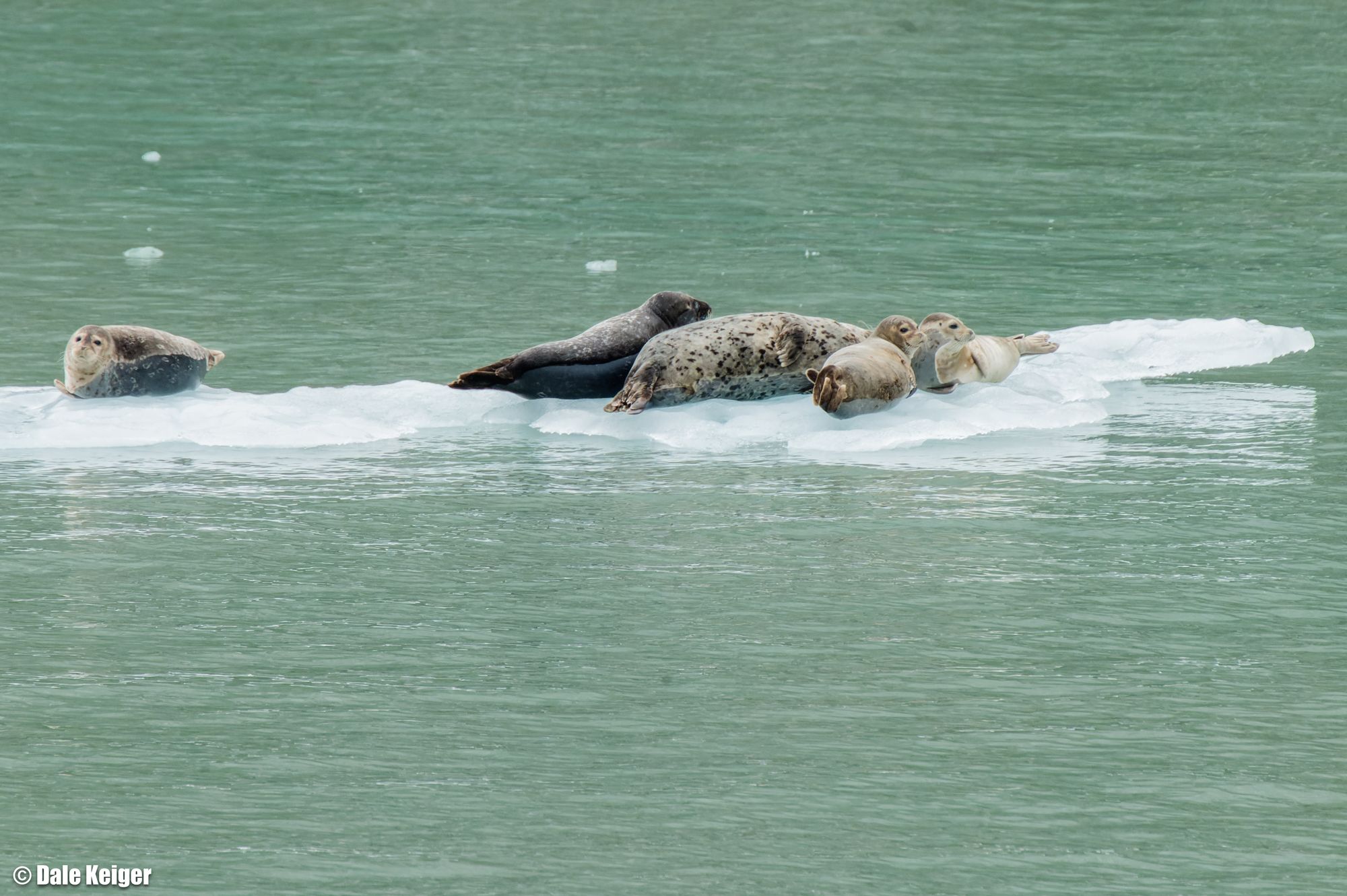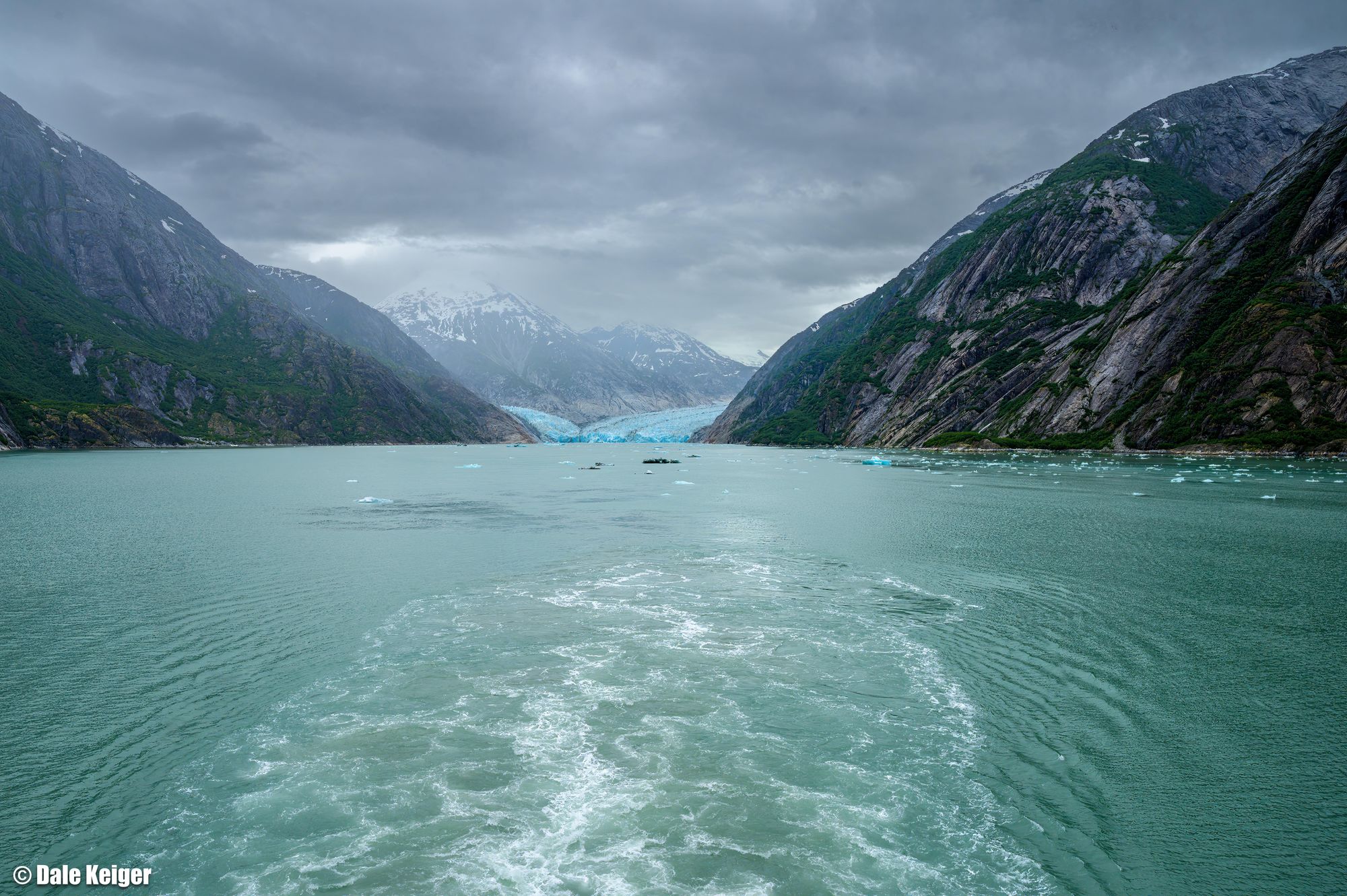Alaska II — Ice

Includes compression of air bubbles, misattribution of Rayleigh scattering, seal sex (not much), and fizzing glaciers.
A few years ago, my wife and I made a decision regarding travel. Our major trips, the ones that involve airports and lots of camera gear, would be to the world's icy places while there was still ice and icy climate wildlife to experience. Our first destination was Churchill, Manitoba, which did not have ice but did have an abundance of hungry polar bears waiting for Hudson Bay to freeze. Last year, arctic Norway—the island of Svalbard. Polar bears, seals, walruses, whales, and at 80 degrees latitude enough ice for our ship to need its icebreaker capabilities. This past June, southeast Alaska, a photo cruise up the Inside Passage from Vancouver to Sitka following a meandering route that took in Ketchikan, Petersburg, Kake, and what you see here: Dawes Glacier at the terminus of Endicott Arm fjord.

Like everything else in the northern high latitudes, Dawes Glacier is a remnant. Thirty thousand to 60,000 years ago, a massive Ice Age glacier carved the fjord. That river of ice is long gone; now we have Dawes, 15 miles long, in places a mile across and either 250 feet or 600 feet high, depending on who you believe. Since 1985, the glacier has been retreating 105 meters per year. It is fed by the Stikine Icefield (which includes among its glaciers one named Johns Hopkins), an icefield that’s also thinning fast due to global warming, or, as Republicans in the US Congress call it, summer.

Conventional ice, if not the transparent cube chilling a tumbler of bourbon, is white because it contains air bubbles and a lesser quantity of water. The tremendous weight of glacial ice squeezes out the bubbles and creates a much higher density of water-to-air. Dense quantities of water are blue. Hence blue ice in a glacier.
You may have heard that scattering of light by ice crystals creates the blue color. Not exactly. Water molecules absorb red and yellow wavelengths and reflect blue. Water, and dense water ice, doesn’t look blue due to what is called Rayleigh scattering—it is blue. But scattering light does factor in. The air bubbles in less dense ice scatter light before it can penetrate to where the water absorbs the longer wavelengths at the red end of the visible spectrum. Glacial ice is more water than air, so light penetrates deeper and the water reflects blue.
Despite the immense compression, some air bubbles remain in glacial ice. As a glacier melts, these bubbles escape. The glacier audibly fizzes. Scientists have figured out how to analyze the acoustic properties of this bubbly off-gassing to study the glaciers’ melting. Smart people, scientists.

Harbor seals find refuge on the ice that Dawes Glacier sheds into the water. They nap and, when they need a break from that, they breed. Less ice means less room for seals. You know where this is going.

Next year we venture to eastern Greenland. We anticipate more ice. I’m already thinking about it. My shutter-button finger is twitching.
A man who keeps company with glaciers comes to feel tolerably insignificant by and by. — Mark Twain
Member discussion